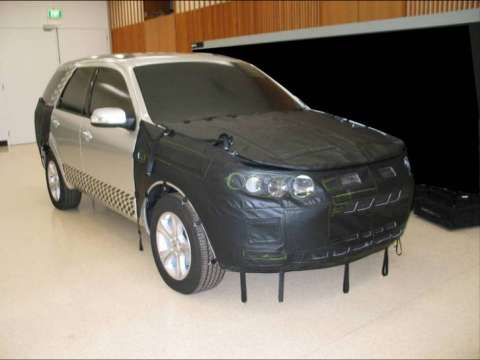
|
|
 |
|
|
|
Welcome to the Australian Ford Forums forum. You are currently viewing our boards as a guest which gives you limited access to view most discussions and inserts advertising. By joining our free community you will have access to post topics, communicate privately with other members, respond to polls, upload content and access many other special features without post based advertising banners. Registration is simple and absolutely free so please, join our community today! If you have any problems with the registration process or your account login, please contact us. Please Note: All new registrations go through a manual approval queue to keep spammers out. This is checked twice each day so there will be a delay before your registration is activated. |
|
|||||||
| The Pub For General Automotive Related Talk |
|
|
Thread Tools | Display Modes |
|
|
#1 | ||
|
Chairman & Administrator
  Join Date: Dec 2004
Location: 1975
Posts: 107,657
|
It is the must-have material to help keep the prying paparazzi away from Ford Australia's top-secret vehicles being developed by the company's prototype team. With an aggressive product roll-out of new vehicles planned for 2011, Ford Australia's program co-ordinator, Damian Lavric, said the sports material was just one of several materials used by the company to disguise its vehicles. Vinyl, foam, vacuum-formed plastic and glass-fibre are also employed in Ford's cover-up campaign. With a major model onslaught planned for 2011, starting with the new turbo-diesel Territory, it has become increasingly critical to keep important test vehicles covered. Apart from the diesel Territory, Ford will launch the new Ranger utility next year, as well as the next-generation Focus and Liquid Phase Injection (LPi) dedicated LPG versions of the Falcon. Ford Australia prototype build co-ordinator for Falcon and Territory, Simon Allen, said the company used a Melbourne-based supplier for its lycra material. "We always try to source locally," he said. Other materials available throughout the One Ford world globally were also evaluated for their suitability for local testing, he said. "As part of One Ford we try to leverage material and ideas that are being used elsewhere," Allen said. "We have access to techniques used around the world." FG Falcon prototype build co-ordinator, Neil Trickey, and his team was responsible for crafting the first use of lycra on the FG – codenamed Orion – during its development. Because of its elastic nature, Lycra can more easily cover a vehicle to help distort its exterior shape, but it's important not to interfere with critical functions, like opening doors or fuel caps. Ford, like other carmakers, often has several pre-production prototypes running around the country for various testing and mileage accumulation Those vehicles have to be shielded from prying eyes. "These days most people have a camera phone so we have to be extra careful when we use public roads with a prototype," Lavric said. "It is a difficult job because we want to keep driving vehicles in real-world conditions but we don't want to inhibit key vehicle functions at the same time, like engine cooling. "It's ironic because we want to disguise the vehicles and hide all the details, but all the stickers and camouflage draw the attention we are trying to avoid." It's not just a vehicle's exterior that must be hidden; the interior is just as important. Any interior coverings can be difficult to fit because they must hide the controls but also allow engineers easy access to audio as well as heating and ventilation switchgear. Ford's camouflage gear must also be durable and solid enough to cope with the harsh Australian conditions, particularly in the outback. Some vehicles are even shipped in purpose-built crates to avoid exposure and any materials must also be durable enough to survive transporting from location to location. Because it will be sold in 180 markets around the world, the new Ranger – codenamed T6 – required detailed full-body camouflage capable of not only surviving often brutal Australian conditions, but the freezing cold of Europe and extreme heat of the Middle East. The man responsible for covering up the Ranger utility prototypes, build co-ordinator, Les Schinck, said work on the T6 was one of the bigger jobs the team had undertaken in recent years. Ford's camouflage team has been flat-out over the past 18 months crafting covers for its newest vehicles. The science of camouflage is more than just covering a vehicle in black tape and vinyl cladding. The whole process starts at the clay modelling stage, even before prototypes hit the road and requires precise measurements to help disguise a vehicle. "We have to be aware of how we are going to camouflage a vehicle from the very early stages of a vehicle's evolution," Lavric said. To help contain costs, Ford also recycles camouflage materials, with equipment being modified and reapplied on other vehicles. 
__________________
 Observatio Facta Rotae
|
||
|
|

|